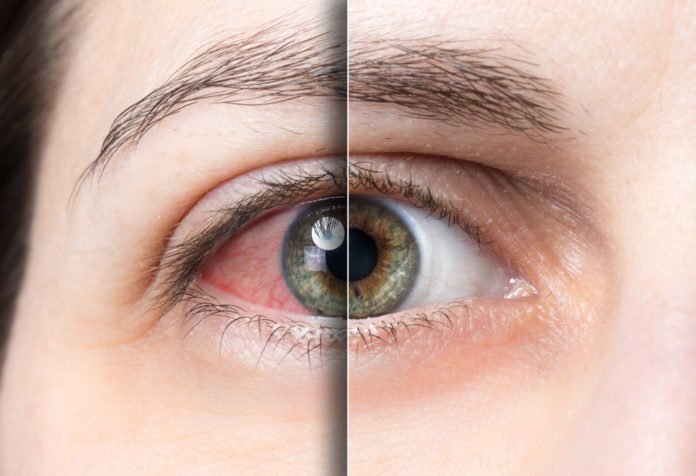Eye diseases and injuries impose a significant clinical problem worldwide. Safe and effective ocular drug delivery is, however, challenging due to the presence of ocular barriers.
In a new study, scientists at the Nanyang Technological University reported that they have developed an eye patch covered in tiny needles.
The eye patch contains an array of detachable microneedles that can penetrate the ocular surface tissue, and serve as implanted micro-reservoirs for controlled drug delivery.

The biphasic drug release kinetics enabled by the double-layered micro-reservoirs largely enhances therapeutic efficacy. Using corneal neovascularization as the disease model, we show that delivery of an anti-angiogenic monoclonal antibody (DC101) by such eye patch produces ~90% reduction of neovascular area.
Chen Peng, a professor in the School of Chemical and Biomedical Engineering at Nanyang Technological University said, “This work provides a new strategy for efficient drug delivery into the eye. With the simple pressing of the eye patch on the eye, the detachable tiny needles can penetrate the ocular surface tissue, and serve as implanted micro-drug-reservoirs. The biphasic drug release kinetics enabled by the double-layered micro-reservoirs largely enhances the therapeutic efficacy.”
“So far, the needle-studded eye patch has been tested on mice, where it demonstrated significantly more effective than regular eye drops. Using corneal neovascularization as the disease model in mice, delivery of an anti-angiogenic monoclonal antibody by [the] eye patch can reduce 90 percent of neovascular area, which is much better than drug efficacy using eye drops, which is around 15 percent.”
Though, scientists are currently working to optimize the eye patch technology by focusing on microneedles’ composition and stiffness. They are also in the process of searching for clinical collaborators for a medical trial, with the ultimate goal of commercializing the technology.
The study is presented in the journal Nature Communications.
